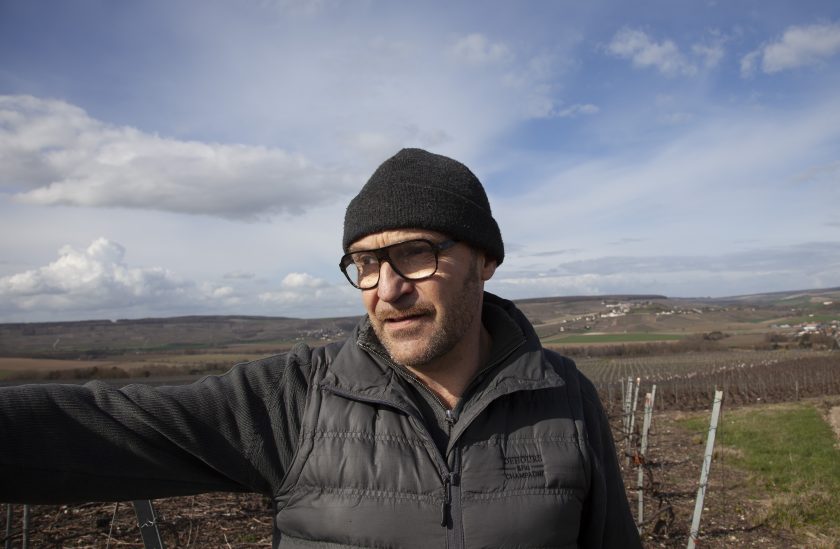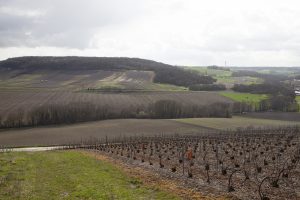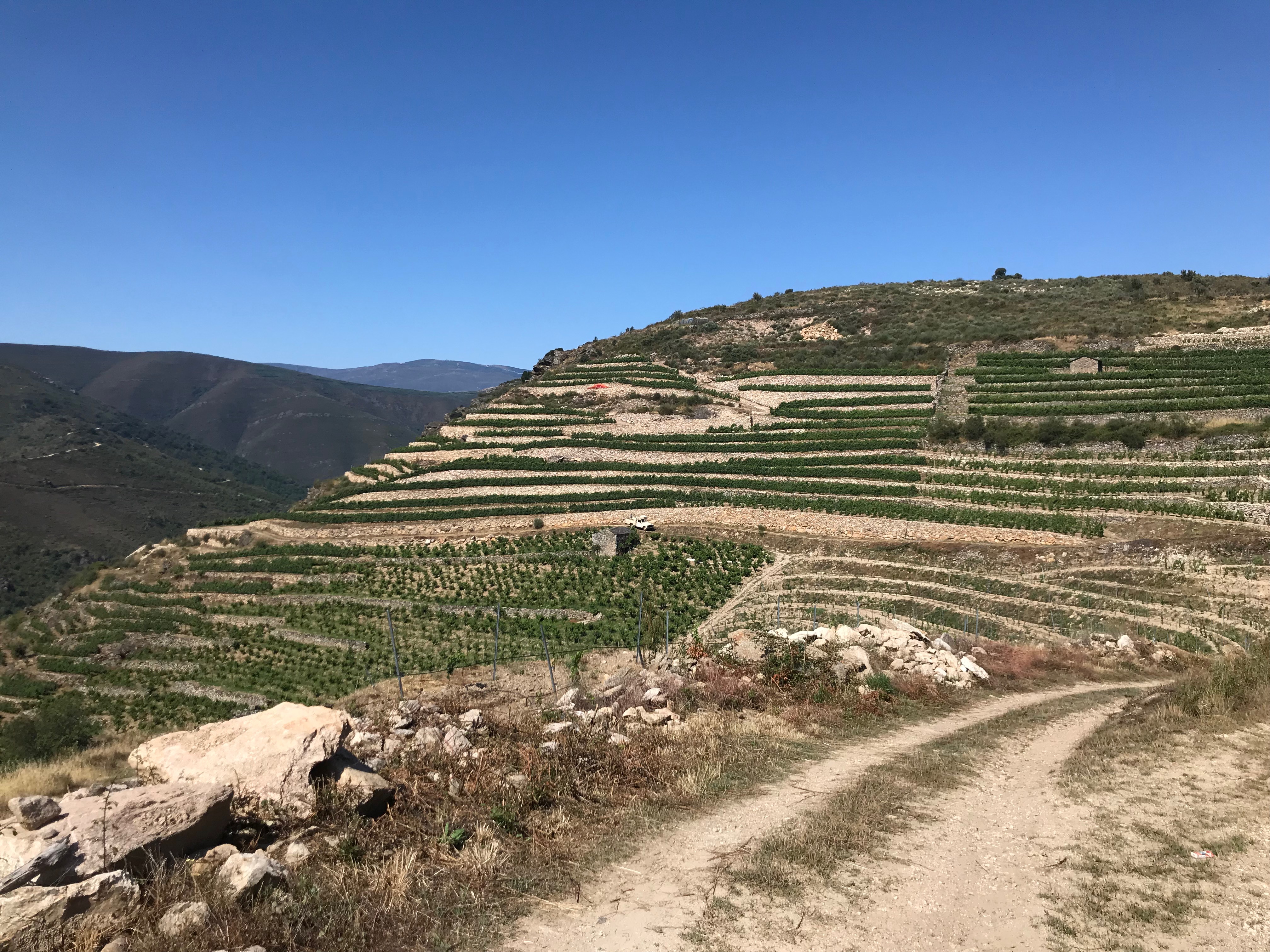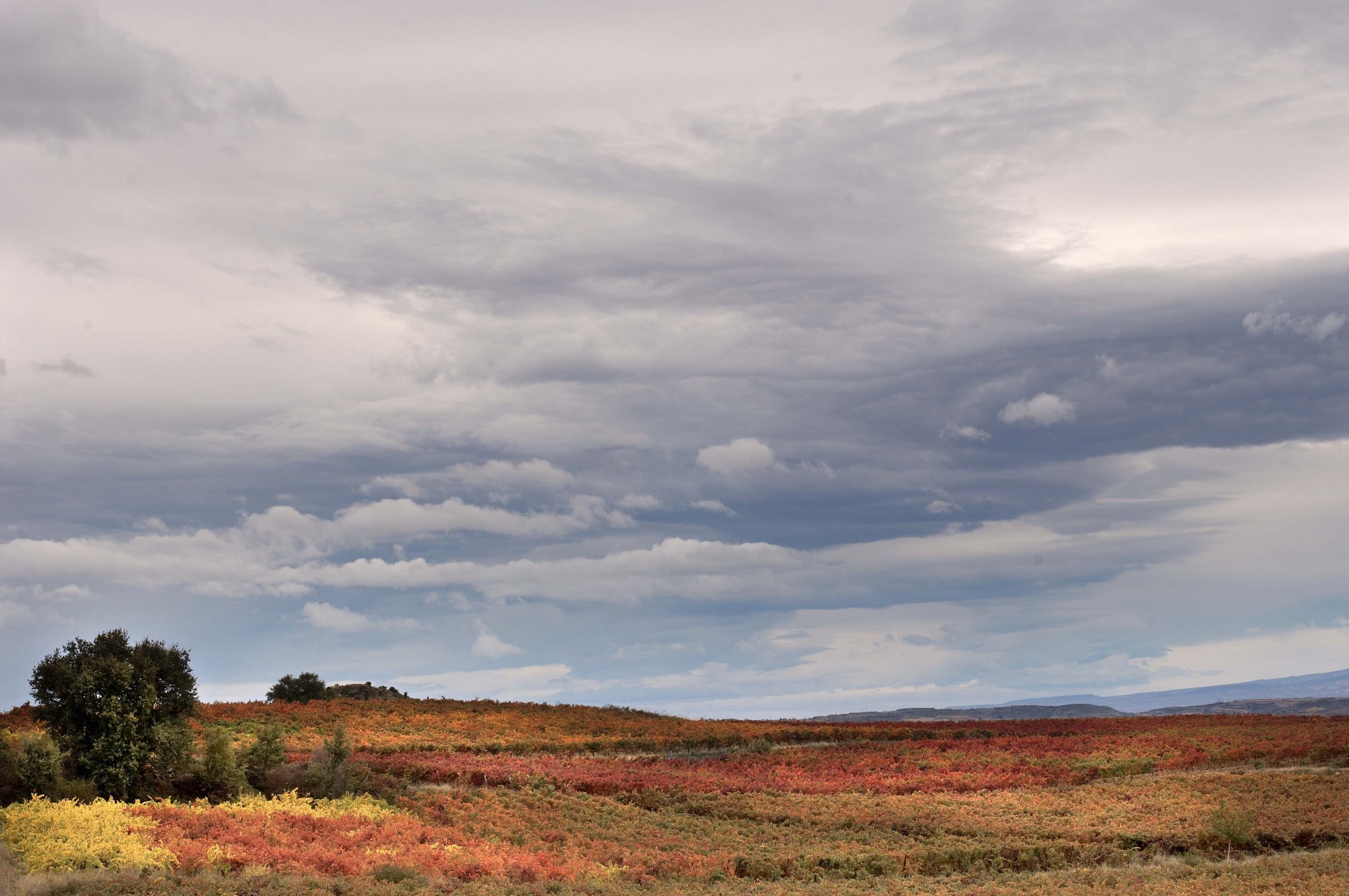Jérôme Dehours farms 42 different vineyards in three distinct villages on the southern side of the Marne River. Jérôme’s 14.5 hectares are split between the villages of Mareuil-la-Port, Oeuilly, Cerseuil and Troissy, in this quiet corner of the Marne. This area is just south of the Marne river at Châtillon-sur-Marne and Cuisles, where Cédric Moussé produces his exquisite wines. This area, the Vallée de Flagot, is named for the small river which has carved out a winding valley called Le Flagot, to meet the Marne River.
Geologically, the soils are quite different than the Grand Vallée around Aÿ, the Montagne de Reims and the Côte des Blancs. Here you find different strata of clays over Marne deposit, which is limestone, and not the belemnite chalk you’re likely to find in the northern Côte des Blancs, for example. Limestone is a sedimentary rock made up of two major types of minerals – calcite and aragonite, which when combined form calcium carbonate. Chalk is a form of limestone that includes a higher proportion of calcite. Both are formed from the skeletal deposits of marine organisms; chalk is made up microorganisms and limestone is generally from larger organisms.
The Vallée de Flagot offers many different exposures and is cooler than many other places in Champagne. Harvest for Jérôme is almost always 7-10 days later than the Côte des Blancs and Montagne de Reims. Because of the climate here, Meunier is the most widely planted variety. Normally, Meunier has a shorter maturation cycle than either Pinot Noir or Chardonnay, but here, Meunier is actually a bit longer.
“My objective is to have the right balance in the fruit at harvest. Every parcel needs to be watched closely and tasted. I never want to make a correction with an addition of sugar, or anything else in the cellar which would obscure the terroir. We are very late, normally. When many people in our area are finishing their harvest, we are just beginning,” Jérôme notes.
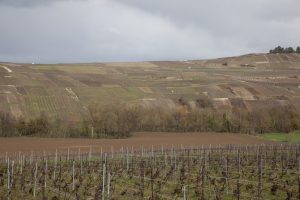 Meunier is the “identity of our place, of our wines” and makes up about 60% of the plantings here, with 30% Chardonnay and 10% Pinot Noir.
Meunier is the “identity of our place, of our wines” and makes up about 60% of the plantings here, with 30% Chardonnay and 10% Pinot Noir.
Dehours was founded by Jérôme’s grandfather Ludovic in 1930. It was Jérôme’s father Robert who developed the estate and began a new activity of trading in grapes. Jérôme knew that he wanted to be a grower, studying first in Beaune and then at the viticultural school in Avize. Tragically, his father Robert passed away suddenly at the age of 50, in 1987. Jérôme was just 21 years old and was not ready to take on the responsibility of the domaine.
“It was necessary to find partners, so the family decided to join a financial group. This association was dictating how the land was farmed and was not in the way that I wanted. I had to figure out how to free myself from these shackles and take back my land. But there was a contract.”
It was not until 1996 that Jérôme was able to extricate himself from this contract.
It took five years of selling fruit, keeping small amounts for himself to make wines, to invest, buy equipment, and slowly expand the holdings. In 2007, Jérôme was still selling half of his production to the négociants. Today, he sells 1/3rd of his production.
Jérôme uses three Coquard presses at the domaine, giving him flexibility at harvest, pressing parcels separately and allowing very strict control at pressing. Non-vintage wines are vinified in tank, while the single-vineyard expressions are produced in barrel. For many years malolactic was blocked here, but ten years ago he started to think about malolactic and the addition of SO2 that it required.
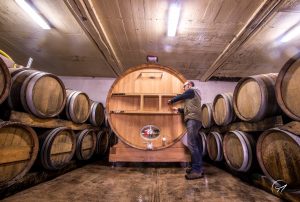 For the past 10 years Jérôme has been allowing malolactic and completely avoiding filtration. In 2014 he did his first experiments without the addition of SO2 and was happy with the results; he has been lowering the levels in all wines for the past five years.
For the past 10 years Jérôme has been allowing malolactic and completely avoiding filtration. In 2014 he did his first experiments without the addition of SO2 and was happy with the results; he has been lowering the levels in all wines for the past five years.
Fermentations are also something that Jérôme has been thinking about for the past five years, with his first experiments with natural fermentation in 2014. Now, a majority of the wines go through alcoholic fermentation with ambient yeasts. Over the past few years, Jérôme has also worked with a lab to select three different yeasts from different vineyards Les Genevraux and Maisoncelle, which he uses together in tirage experiments for some cuvées, and especially to begin fermentation quickly after pressing for experiments “without SO2”. These yeasts (who are part of the terroir) were selected for their ability to produce complexity of aroma and to resist pressure during the secondary fermentation; “of course, they must also remain active,” says Jérôme.
Jérôme is a producer who is full of energy and life, who loves his work and the community of growers in Champagne; he’s one of the founders of Les Artisan du Champagne, a group of growers formed to promote high-quality RM wines. His wines reflect his curiosity and excitement but also an uncommon precision which deepens each year. We are very excited to introduce you to the Dehours family and these outstanding Champagnes!
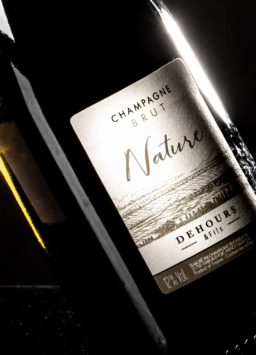
Brut Nature, Dehours
Cépages: Meunier (70%), Pinot Noir (10%), Chardonnay (20%)
Assembelage: 70% annual base, and 30% wines from a perpetual reserve started in 1998.
Vineyard/Village: Mareuil-le-Port, Troissy, Oeuilly.
Malo: Yes
Fermentation/Elevage: Mostly stainless steel tank and barrel for a small part. Aging on the lees. Natural clarification, no filtration. Bottling in Summer, and then 24 to 36 months of bottle aging on lees before disgorgement. All details are on the back labels. It varies according to the disgorgement date.

Grand Reserve Brut, Dehours
Cépages: Meunier (70%), Pinot Noir (10%), Chardonnay (20%)
Assembelage: 70% annual base, and 30% Wines from a Perpetual Reserve started in 1998.
Vineyard/Village: Mareuil-le-Port, Troissy, Oeuilly.
Malo: Yes
Fermentation/Elevage: Mostly stainless steel tank and barrel for a small part. Aging on the lees. Natural clarification, no filtration. Bottling in Summer, and then 12 to 24 months of bottle aging on lees before disgorgement. All details are on the back labels. It varies according to the disgorgement date.

La Vignes de la Vallee, Dehours
Cépages: Meunier (70%), Pinot Noir (10%), Chardonnay (20%)
Assembelage: 70% annual base, and 30% Wines from a Perpetual Reserve started in 1998.
Vineyard/Village: Mareuil-le-Port, Troissy, Oeuilly.
Malo: Yes
Fermentation/Elevage: Mostly stainless-steel tank and barrel for a small part. Aging on the lees. Natural clarification, no filtration. Bottling in Summer, and then 42 to 54 months of bottle ageing on lees before disgorgement. All details are on the back labels. It varies according to the disgorgement date.

Oeil de Perdrix Extra Brut, Dehours
Cépages: Meunier (83%), Chardonnay (17%)
Assemblage: Blend of White and red wines
Vineyard/Village: Mareuil-le-Port, Troissy.
Malo: yes
Fermentation/Elevage: Mostly stainless-steel tank and barrel for a small part. Aging on the lees. Natural clarification, no filtration. Bottling in Summer, and then 12 to 24 months of bottle ageing on lees before disgorgement. All details are on the back labels. It varies according to the disgorgement date.




